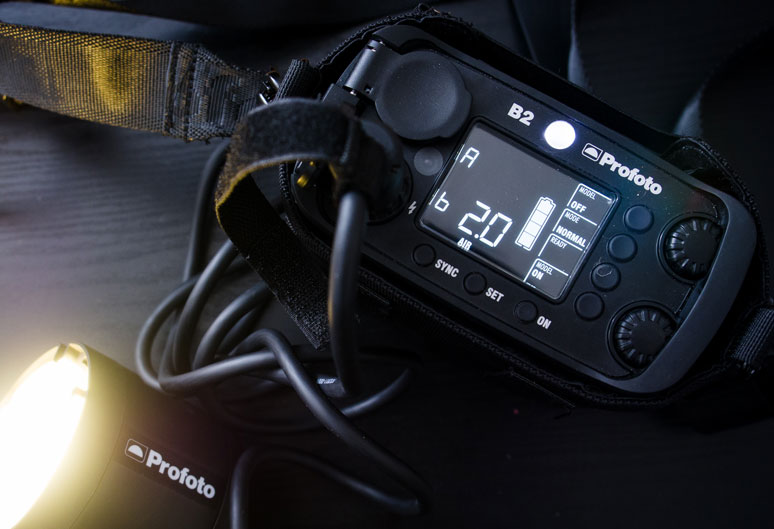Portrait and commercial photographer Holly Wren tests the Profoto B2.
I should start this review by saying that, B2 or B1X, I’m a huge Profoto fan, and the launch of the B1’s back in 2014 literally changed my life. I exaggerate, but you see my point. So when the B2’s launched a year later in 2015 it was hard to prise the B1’s out of my Profoto obsessed paws. I saw the B2’s as a lesser B1, perhaps a cheaper, inferior B1 with less power (250w as opposed to 500w).
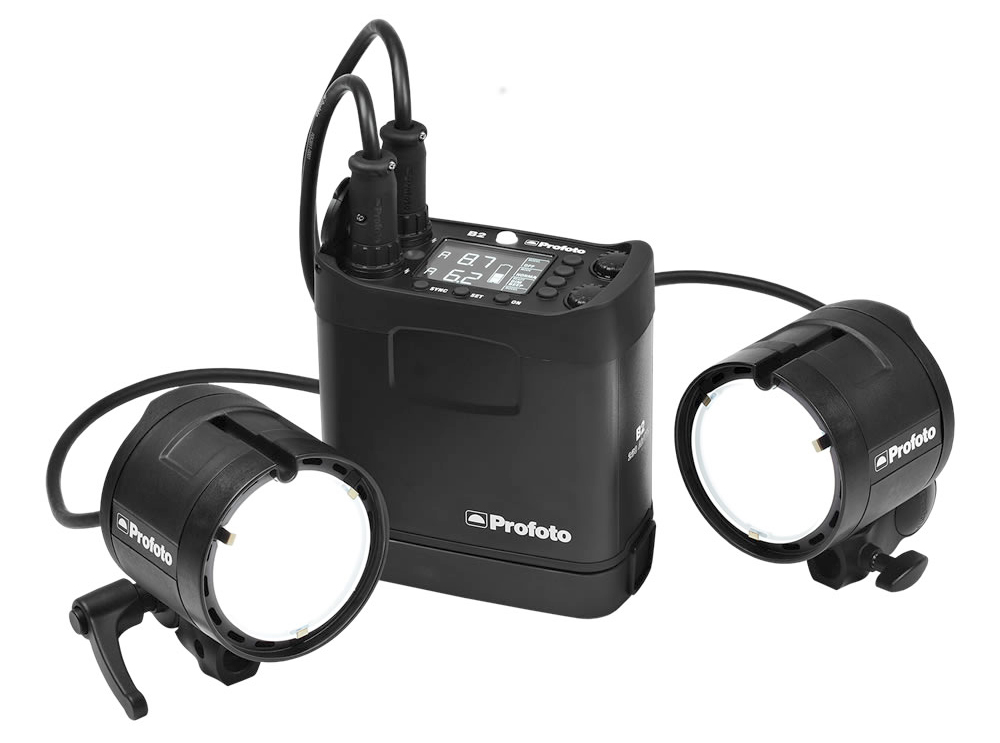
Maybe I didn’t like the battery pack, or the wires, or most importantly the stupid on-camera holder thingy that featured heavily in the launch, but the fact is I was wrong. And here’s why.
Specification wise both the B1X and B2 perform with the same signature Profoto functions (with varying abilities on some of the below)
- HSS (High Speed Sync), allowing you to shoot up to 1/8000 second and wide open in daylight.
- “Freeze” mode, meaning you can freeze action down at shutter speeds as little as 1/200 second (the function uses flash duration as opposed to shutter speed to stop motion).
- Wireless triggers that function with TTL (for Nikon, Canon, Olympus and Sony).
- Compatibility with Profoto’s range of light shaping tools (or modifiers) meaning we can soften and harden the light in over 120 ways.
- Easy to use interface (you probably won’t even need an instruction manual to get going).
- And of course, the beautiful and consistent light.
That’s all impressive stuff, and chances are if you are looking to buy a B2 or indeed a B1X these are the compelling reasons to do so. So why choose the B2?
Putting power aside for a second (and that may be the deal breaker for you) the B2 actually gives you the functions of the B1X but with extras. Not specification extras, like, and I’ll say it again, power. But extras that just make these lights a little more user friendly than it’s big brother the B1X.
You see, Profoto are pretty good at location lighting, okay, they’re excellent at it and the B1X is certainly a light to be reckoned with, but my problem with it is, is it truly portable? Like, would I carry it on my back with my camera gear across London portable? And the answer is no. Which is where the B2 wins my heart with its size and portability.
The B2 actually does what it claims to – it’s a portable studio flash. It’s lightweight (just 1.7kg for the battery pack and 0.7kg for the head, as opposed to 3kg of the B1X unit), and it fits in my kit bag alongside my cameras and lenses, meaning that the only extra to carry is a modifier or two, and a stand.
I can take it places without an assistant or a car and the battery pack allows me to plug two heads in, offering me the flexibility of a multiple light set up with very little extra weight or bulk. It’s the kind of light you can take with you “in case” you want or need to use flash, for the times when you don’t know exactly what your location or client has in store.
One could argue also that the head being much smaller and lighter than the B1X makes it easier to handle by an assistant as the weight on the end of the stand is less, given the majority of the weight is in the battery pack, which can be placed on the floor, carried over the shoulder or on a belt (has anyone actually ever done that?!)
The lighter head also means if you’re going solo you can use a more lightweight stand (depending on your modifier) saving yet more trips to the chiropractor. And with modifiers such as grids and the 2′ octa being lightweight and small there is very little needed to create a successful basic set up.
However, the B2 isn’t perfect; it’s battery life isn’t comparable to that of the new B1X. Officially the stats are up to 215 full power flashes which is the equivalent of just over 600 on the B1X. In the real world, in my experience, shooting at around half to full power, with the modeling light on, you’ll probably get an hour or so out of a battery out of the B2, before you need to change it. That said, carrying a spare is essential anyway and charging is quick, at just under an hour, making the battery life a slight inconvenience but not a deal breaker. I should note here how irritating the battery is to change; it’s a faff, not the actual battery, which is easy, but the holding case, which sits a little too snug.
And although the wires aren’t too much of an issue, they do lack length if you want a head raised high up on a stand, so you’ll probably need to buy an extension lead, especially for getting that second light in position.
So, the only real question that remains is power – the B1X at 500w doubles that of the B2 at 250w and so if power really is your requirement, the case for the B2 is redundant.
Although a point worth making here is that although the B1X has double the power, it only equates to around 1 additional stop of light. Technically if you’re prepared to open up, you can deliver almost identical results.
So the question remains, how much power do you need? For me, I hardly ever use the B2’s at full power so they are more than sufficient.
If you want beautiful light, easy handling, portability and multiple heads that can both infill ambient light and overpower the sun, the B2s might just be the light for you. But as with all camera gear, you need to work out how and what you’re shooting before you can decide which product suits your needs best. Which is why it’s especially handy that you can hire before you buy or just rent on demand.
Give the B2’s a go, I promise you won’t regret it.
Examples
In the shots below I worked alone to photograph Ayo, on a one light set up, with only the 2’ OCF beauty dish as a modifier, to show what’s possible with minimal kit.
Shot using the B2 to mimic and infill the natural light coming through the window as shown on the left. Using the OCF Beauty dish, the flash blends with natural light.
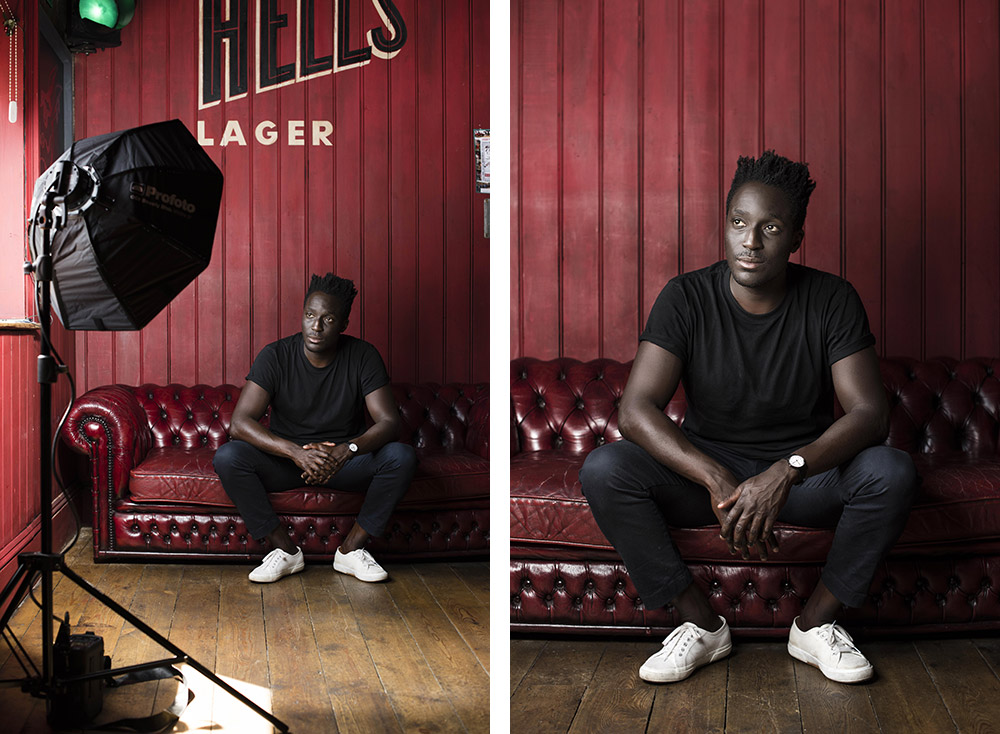 Nikon D810 | 50mm ƒ/1.4, 1/160 sec, ƒ/4, ISO 400, B2 Power 3.2
Nikon D810 | 50mm ƒ/1.4, 1/160 sec, ƒ/4, ISO 400, B2 Power 3.2
Shot using the B2 to create a look of harder light falling onto the image from the right, making the room look darker and creating a higher contrast. Using an OCF Beauty dish and white reflector behind subject.
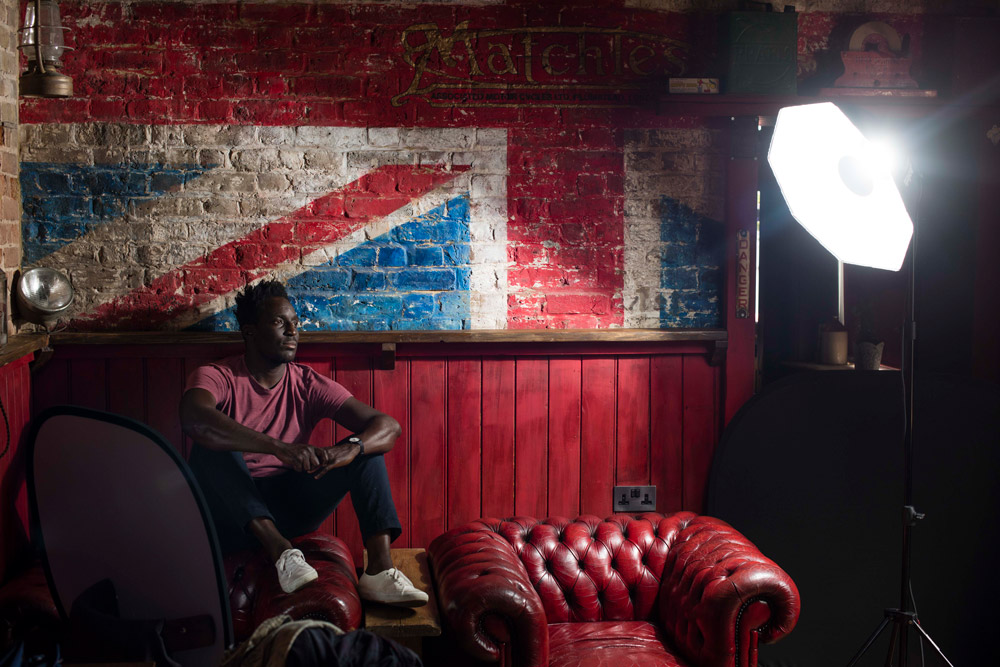
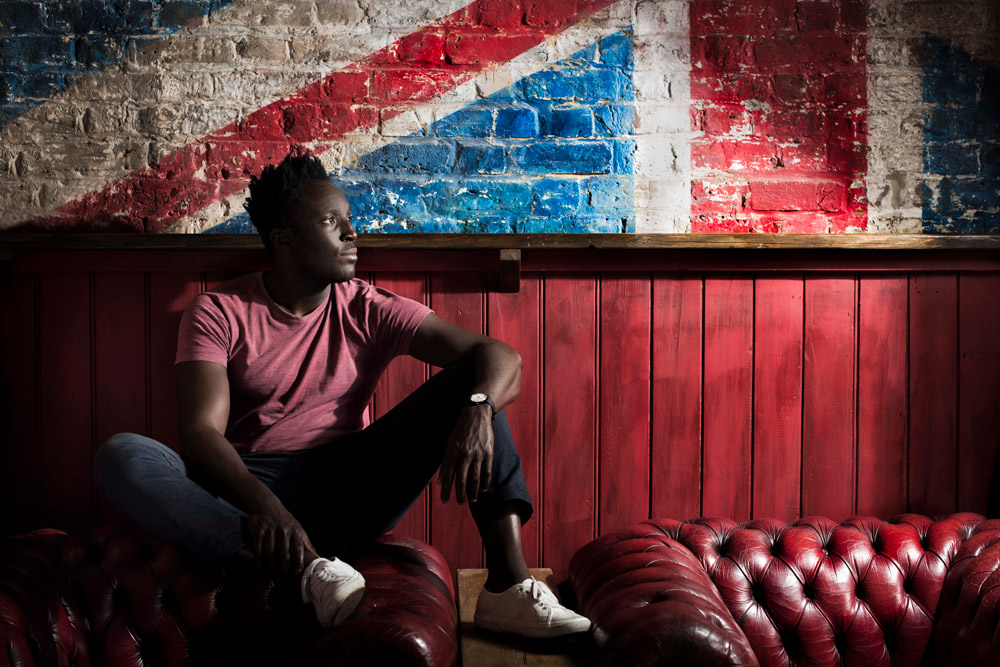 Nikon D810 | 50mm ƒ/1.4, 1/200 sec, ƒ/5, ISO 640, B2 Power 6.0
Nikon D810 | 50mm ƒ/1.4, 1/200 sec, ƒ/5, ISO 640, B2 Power 6.0
Shot using a bare head that was positioned on top of the piano close to the subject, with a white reflector behind. Flash is used to create a low key, high contrast image; back black wall is eliminated to focus on Ayo at the Piano.
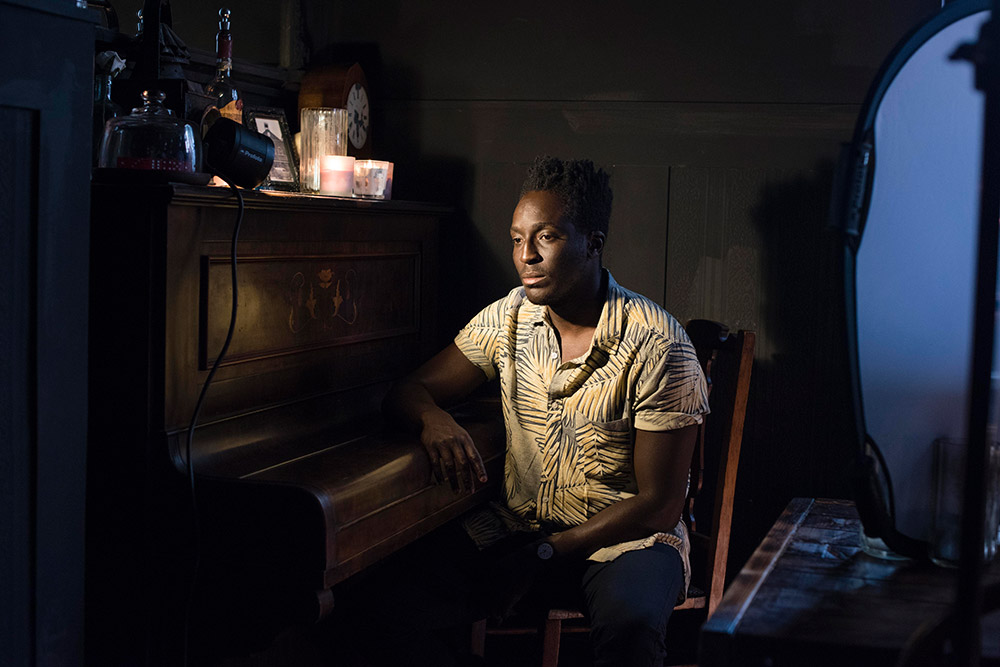
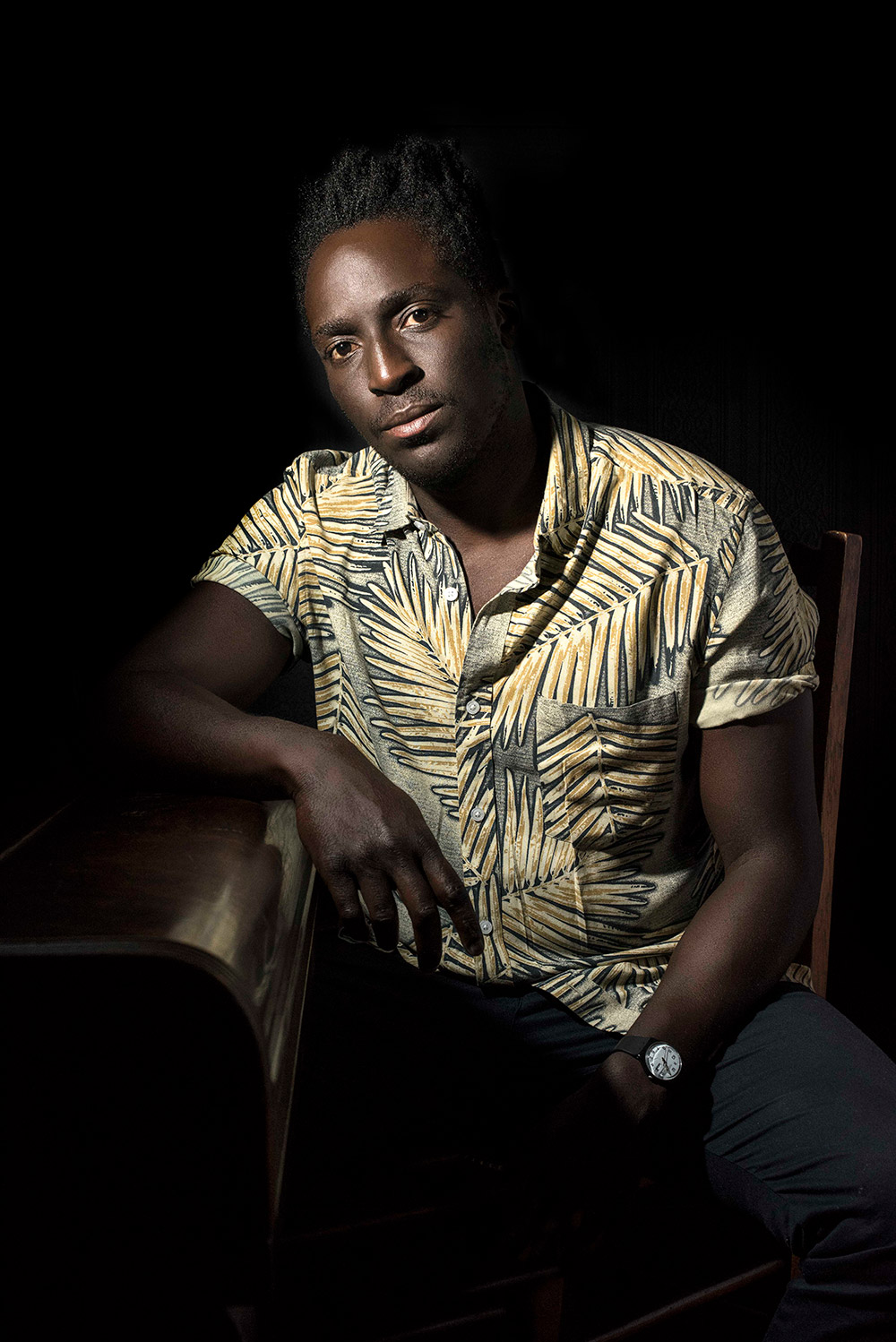 Nikon D810 | 50mm ƒ/1.4, 1/160 sec, ƒ/9, ISO 1250, B2 Power 2.2
Nikon D810 | 50mm ƒ/1.4, 1/160 sec, ƒ/9, ISO 1250, B2 Power 2.2
Shot using the B2 on its modelling light to illuminate Ayo’s face and give the feeling it’s being lit by the candles on the piano. Natural light used to highlight the arm. B2 placed on piano behind vase. Reflector in front to reflect the natural light back into the image.
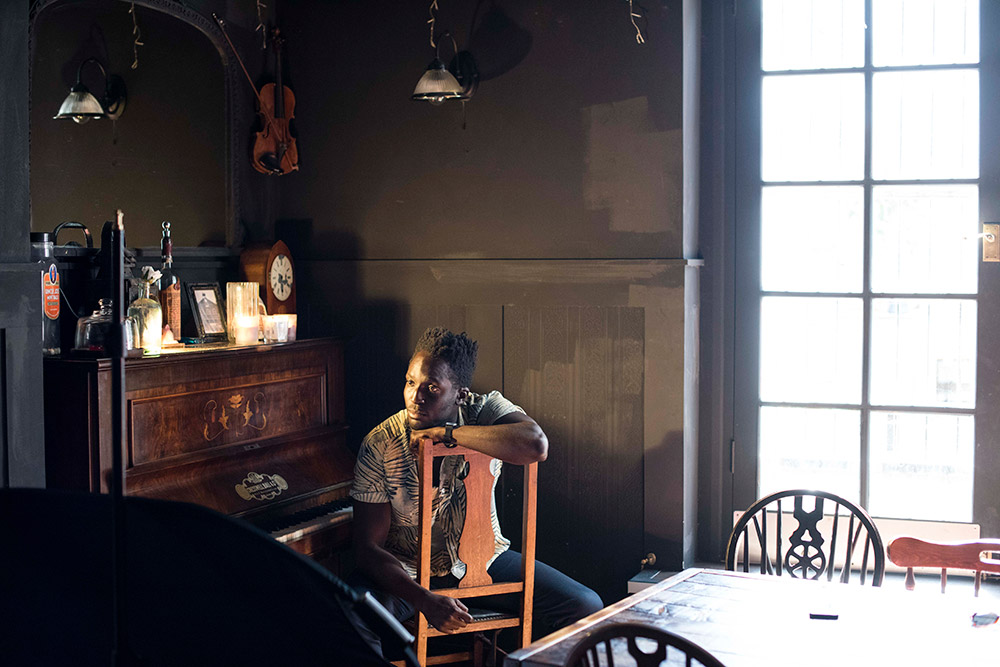
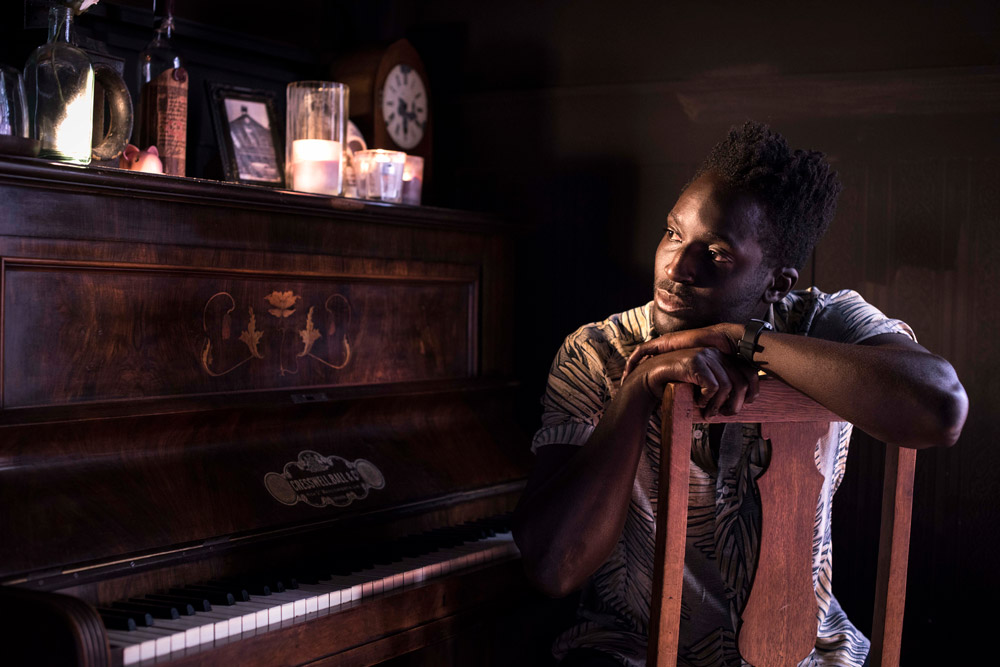 Nikon D810 | 50mm ƒ/1.4, 1/125 sec, ƒ/3.2, ISO 1250, B2 modelling light
Nikon D810 | 50mm ƒ/1.4, 1/125 sec, ƒ/3.2, ISO 1250, B2 modelling light
To try the Profoto battery lighting, contact our rental department and take advantage of our special weekend rate.
To see more of Holly’s work, visit her website www.hollywren.com

